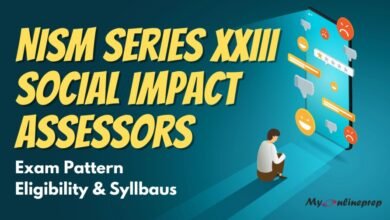
The Teaching Reading Sourcebook (TRS) can be implemented, and this will greatly improve reading education in schools. Teachers can successfully incorporate TRS into their teaching techniques with the help of this useful guide.
Comprehending the Instructional Reading Guide
The Teaching Reading Sourcebook is a thorough manual for teaching literacy that focuses on strategies supported by research to help children become better readers. It covers phonemic awareness, phonics, vocabulary, fluency, and comprehension, among other components of reading.
Using the Teaching Reading Sourcebook: Advantages
Enhanced Reading Skills: TRS offers practical methods to help pupils become more proficient readers.
Data-Driven Instruction: TRS places a strong emphasis on utilizing data to monitor student progress and guide instruction.
Professional Development: Teachers can improve their knowledge and abilities in reading instruction by implementing TRS.
How to Put the Teaching Reading Sourcebook into Practice
To fully comprehend the TRS’s tactics and content, read it from cover to cover.
Determine the main ideas and tactics craft of research that are appropriate for your pupils’ requirements.
Align the Curriculum with the Sourcebook
- Determine which curriculum areas can incorporate TRS techniques.
- Adapt current lesson plans to use TRS techniques.
Examine the curricular objectives and goals
- Determine the essential reading abilities and ideas that are listed in your curriculum.
- Ascertain how these skills can be supported and improved by TRS techniques.
- Find Integration Areas: Examine your curriculum to find areas where TRS techniques can be used.
- Look for ways that TRS can improve on current teachings or meet particular literacy needs.
- Adapt Lesson Plans: Change your lesson plans to include activities and methods from TRS.
- Make sure that TRS follows your curriculum’s order and tempo.
- Offer Professional Development: Educate educators on how to incorporate TRS into their lessons by providing them with guidance and assistance.
- Offer tools and resources that support TRS tactics.
- Monitor Alignment: Keep an eye on how well TRS and your curriculum are aligned.
- As necessary, make changes to guarantee that TRS is integrated successfully.
Educate Staff Members and Teachers
- Provide educators the chance to learn about TRS through professional development programs.
- Work together to exchange resources and best practices with coworkers.
Track Development and Make Modifications
Utilize Data to Track Development
Utilize evaluations and standardized testing to get information about students’ reading abilities.
Examine the information to find patterns and potential areas for development.
Monitor Every Student’s Development
Keep track of each student’s progress as a reader over time.
Utilize this data to customize instruction to meet the needs of each unique student.
Modify Instruction in Light of Data
Adapt your teaching methods to the areas in which your students are having difficulty.
For students that require more assistance, offer extra support or intervention.
Work Together with Coworkers
Collaborate with literacy experts and other educators to exchange information and analysis.
Work together to develop tactics that will enhance student results.
Consistently Assess the Effectiveness of TRS: Examine how TRS affects students’ involvement and reading abilities.
Based on comments and results, modify the TRS implementation.
Problems and Solutions
There may be several difficulties with putting the Teaching Reading Sourcebook (TRS) into practice. However, these difficulties can be successfully overcome with thorough preparation and preventative actions.
Problem: Insufficient Funds
Solution: Look for grants or financing to buy TRS supplies. Investigate other funding options including fundraising campaigns or community partnerships.
Problem: Teachers’ resistance to change. Solution: Give them continual support and training so they can use TRS techniques with confidence. Establish a welcoming atmosphere that promotes instructors’ innovation and teamwork.
Challenge: Curriculum Alignment Solution: Closely collaborate with curriculum developers and administrators to match current curriculum standards and goals with TRS techniques. To guarantee a smooth implementation process, find areas of integration and overlap.
Difficulty: Observation and Assessment
Solution: Provide a framework for tracking student development and assessing how well TRS is being implemented. Make well-informed judgments and instructional modifications by utilizing insights derived from data.
Sustainability is a challenge
Solution: Create a long-term strategy to continue implementing TRS after the initial stage. Invest in teacher professional development opportunities and make sure TRS techniques are updated and reviewed regularly to accommodate changing student demands.
Achievements
The Teaching Reading Sourcebook (TRS) has been effectively adopted in many schools, leading to notable gains in students’ academic performance and reading abilities. A notable instance of this may be seen at XYZ Elementary School.
Where the adoption of TRS resulted in a notable boost in students’ reading ability. The school saw a 20% increase in reading scores at every grade level after implementing TRS tactics into its curriculum. Instructors noted that pupils appeared more confident in their reading skills and were more involved in reading activities.
Summary
Student outcomes can be enhanced and reading instruction transformed by implementing the Teaching Reading Sourcebook. Teachers can successfully include TRS in their lesson plans and assist students in becoming proficient readers by adhering to these doable steps.



